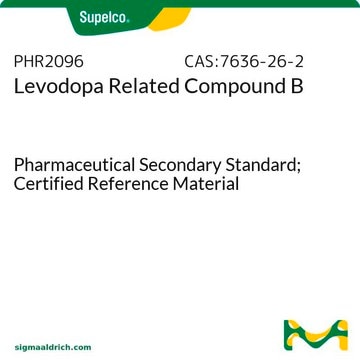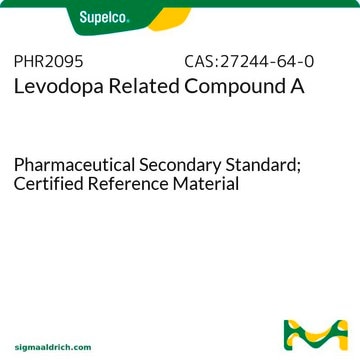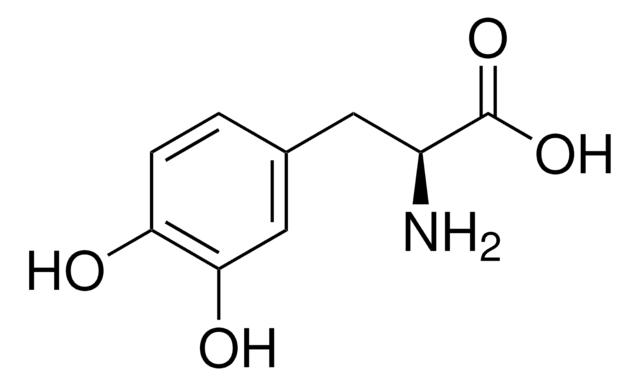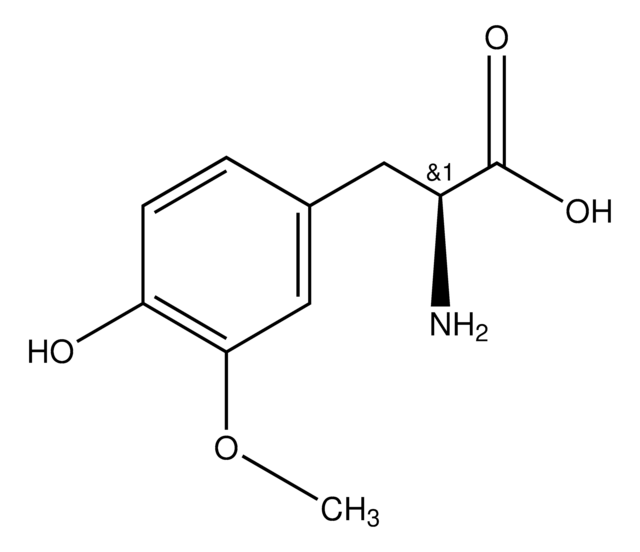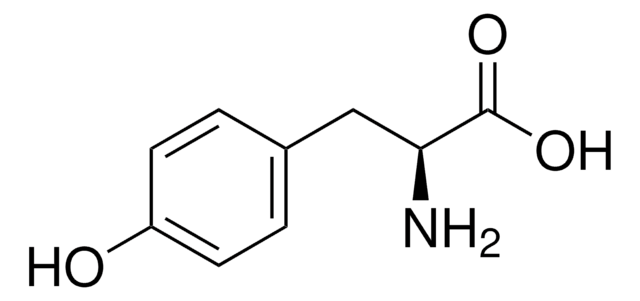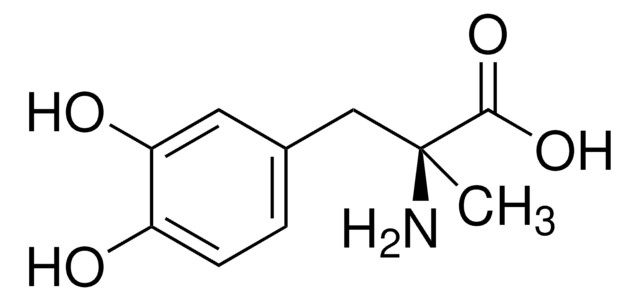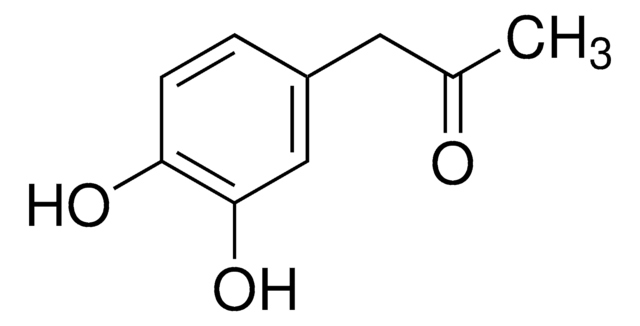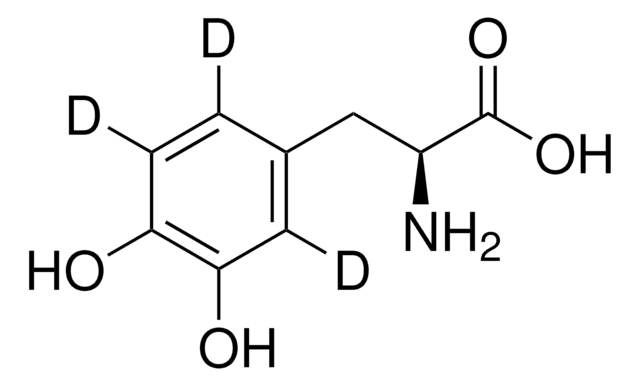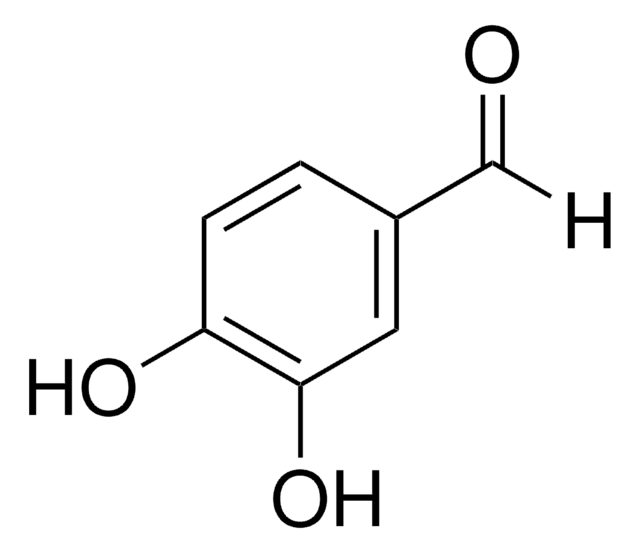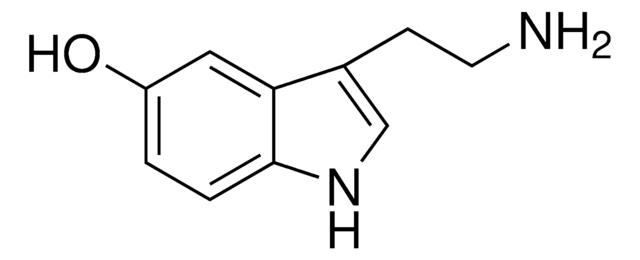1420006
USP
Levodopa Related Compound B
United States Pharmacopeia (USP) Reference Standard
Synonym(s):
DL-3-O-Methyldopa, 3-Methoxytyrosine
About This Item
Recommended Products
grade
pharmaceutical primary standard
API family
levodopa
manufacturer/tradename
USP
application(s)
pharmaceutical (small molecule)
format
neat
InChI
1S/C10H13NO4/c1-15-9-5-6(2-3-8(9)12)4-7(11)10(13)14/h2-3,5,7,12H,4,11H2,1H3,(H,13,14)
InChI key
PFDUUKDQEHURQC-UHFFFAOYSA-N
Looking for similar products? Visit Product Comparison Guide
General description
Application
Also, for use with USP monographs such as:
- Carbidopa and Levodopa Orally Disintegrating Tablets
- Levodopa
- Carbidopa and Levodopa Tablets
- Carbidopa and Levodopa Extended-Release Tablets
Analysis Note
Other Notes
related product
wgk_germany
WGK 3
flash_point_f
Not applicable
flash_point_c
Not applicable
Certificates of Analysis (COA)
Search for Certificates of Analysis (COA) by entering the products Lot/Batch Number. Lot and Batch Numbers can be found on a product’s label following the words ‘Lot’ or ‘Batch’.
Already Own This Product?
Find documentation for the products that you have recently purchased in the Document Library.
Customers Also Viewed
Our team of scientists has experience in all areas of research including Life Science, Material Science, Chemical Synthesis, Chromatography, Analytical and many others.
Contact Technical Service